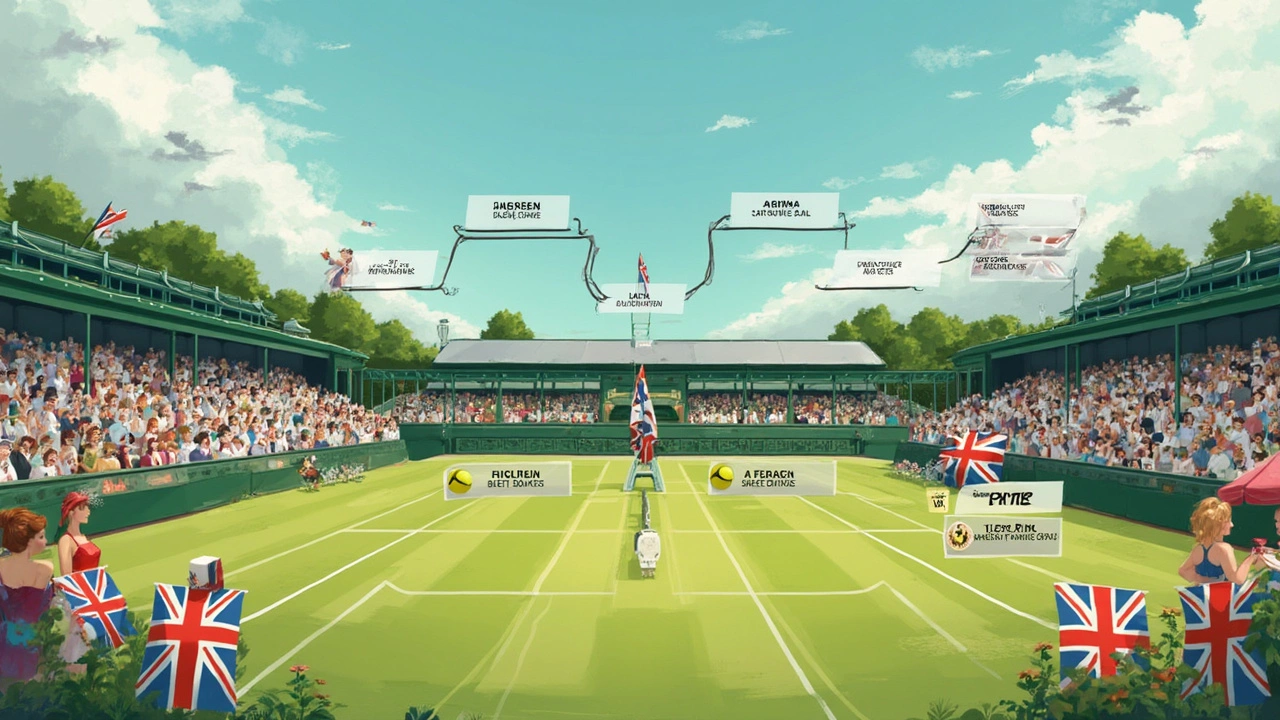
Bye in Tennis – Simple Guide to the Tournament Free Pass
Ever wondered why some players start a tournament without playing the first round? That’s a "bye" – a free pass that lets a player skip a match. It sounds like a perk, but there’s a method behind it. In this guide you’ll get the basics, see when byes appear, and learn how they shape the rest of the event.
When Do Byes Occur?
Byes happen when the draw size doesn’t match the number of spots needed for a full bracket. For example, a 64‑player draw needs 64 slots, but only 56 players signed up. The organizers fill the missing eight spots with byes, usually given to the top‑seeded players. That way the bracket stays balanced and the later rounds still have the right number of matchups.
Most big events – Grand Slams, ATP 1000s, and WTA Premier tournaments – use byes for the top seeds. In a 128‑player Grand Slam, there are no byes because the draw is full. In smaller events, the top four or eight seeds often get a first‑round bye, letting them rest while lower‑ranked players battle it out.
How Byes Influence Rankings and Strategy
From a ranking perspective, a bye doesn’t give you points automatically. You still have to win matches to collect points, but you start one round ahead, meaning you need fewer wins to reach the same stage. That can be a big advantage for players fighting to defend or improve their ranking.
Strategically, a bye lets a player settle into the tournament environment, watch potential opponents, and fine‑tune their game plan. However, it can also mean a slower start because the first match comes after a day of watching others play. Some players prefer that warm‑up; others feel the lack of match rhythm.
For the opponent who earned the bye by beating someone in the first round, the situation flips. They’ve already got a match win under their belt and might be more “in the zone.” That’s why you’ll sometimes hear talk about a "bye disadvantage" – the rested player may be a bit rusty while the challenger is already in swing.
In doubles, byes work the same way. The top pairs skip the opening round, which can affect team chemistry if they haven’t played together recently. Coaches often use the extra time to practice specific plays or work on serve‑return patterns tailored to likely opponents.
Fans sometimes get confused when they see a star player not playing the first day. Remember, the tournament draw is designed to keep the competition fair and exciting. Byes help maintain a smooth bracket while rewarding the highest‑ranked entrants.
In short, a bye in tennis is a simple scheduling tool that offers rest, strategic insight, and a slight path advantage. Whether you’re a player, a coach, or just watching from home, knowing why byes exist helps you follow the tournament story better.
Next time you check a draw and spot a blank slot, you’ll know it’s a bye – a little break that can swing the momentum of an entire event.
